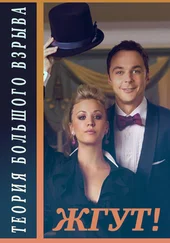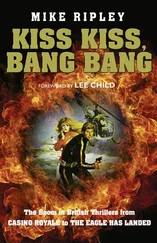1 ...6 7 8 10 11 12 ...19 According to Burke, textualist critics, by deciding to ignore the various connections between authors and their creative products, simplify matters rather too much. As a result, issues of creativecreativity production have not been explored sufficiently. Yet, against the backdrop of the current ‘return to biographybiographical approach,’ a development that was already set in motion with Roland BarthesBarthes, Roland’ The Preparation of the Novel and within which “the question of the author poses itself ever more urgently” (Burke 191), literary criticism could face the challenge to include the author in textual analysistextual analysis. Frédéric RegardRegard, Frédéric makes a plea for this, arguing that it “raise[s] crucial issues in the theory of interpretation, if only because the notion of the author’s concrete life as person, a living individual, cannot be totally eradicated from the literary text” (396). The literary works’ own encouragement to draw parallels between the protagonists and their authors could be a starting point for critics to work their way from a text to its writer. And what better material is there than narratives with protagonists that are, like their authors, acutely aware of the tenets of creative production – here in the form of late-style theory? Literary criticism could certainly benefit from theorizing the boundary between author and work more thoroughly, and late-style theory may uncover some notions of creativecreativity production that have remained veiled so far.
This boundary is subject to the concept of the late-style narrativelate-style narrative, which develops a theory of late style through the portrayal of an aged artist-protagonist and motivates the comparison between the protagonist’s and the author’s creative processes. The works assessed in this study are all late-style narratives, and there are many more that one could include: Philip Roth’sRoth, Philip Exit Ghost , Joseph HellerHeller, Joseph’s Portrait of an Artist, as an Old Man , Paul Auster’sAuster, Paul Winter Journal , Hanif Kureishi’s The Last Word , Samuel R. Delany’sDelany, Samuel R. Dark Reflections , and several of J.M. Coetzee’sCoetzee, John Maxwell novels (for instance Disgrace and Elizabeth Costello ), to name but a few. Unsurprisingly, the most straight-forward examples, listed above, are all written by male authors, for, traditionally, late style has been “an overwhelmingly male category” (Hutchinson, Afterword 238). Addressing the gendergender bias in late-style studies, McMullanMcMullan, Gordon states that “women have no place in the ranks of late stylists, just as they have no place (or at best a highly circumscribed place) in the larger concept – geniusgenius – of which late style is a sub-category” (17). Indeed, not only is there a noticeable gap in criticism about female late style, but female authors also seem more reluctant to write about issues of late-life creativity than their male colleagues. The few works that come to mind when looking for Anglophone late-style narratives written by women include Sena Jeter Naslund’sJeter Naslund, Sena The Fountain of St. James Court , Penelope Lively’sLively, Penelope Ammonites and Leaping Fish , as well as the works by Karen BlixenBlixen, Karen and Joan DidionDidion, Joan discussed in this study. Furthermore, there are traces of a late-style narrative in Alice Munro’sMunro, Alice most recent collection of short stories Too Much Happiness , and there are certainly further works that contain implicit references to the search for new forms of expression in old age.
Still, in comparison with the male type, female late-style narratives are scarce. This is no surprise: if one takes into account the hypothesis that ageing artists fashion their late works against the backdrop of late-style theories, and that these theories are mostly concerned with male artists, women writers do not see themselves reflected in these theoretical frameworks – nor may they feel the urge to reflect on late-style theories to the same extent as male writers. However, as more scholarly work on female late stylegender is produced (see, for example, the collection of essays Literary Creativity and the Older Woman Writer ), more female late-style narratives might emerge, too. The present study, with two thirds of its analyzed texts being written by women, shall thus also contribute to a growing corpus of late-style theory that – besides being wary of ageist methodology (cf. Introduction) – aims at a more balanced gendered discourse.
2.2 Universalistuniversal late style and Individualist Approaches
There is a strange paradox to the idea of late style, which has resulted in a persistent divide within the community of late-style scholars. It resides in the incompatibility of two of late style’s tenets: on the one hand, there is the belief that late style is a universal phenomenon. On the other, the late artist is considered a geniusgenius and therefore marked by singularity. However, one can hardly insist on an artist’s uniqueness, justifying his or her greatness with the presumed existence of his or her distinctive late period, and simultaneously affirm that late style just ‘happens’ in most artists’ work in much the same way. In the greater part of late-style criticism, this paradox causes no major inconvenience because most studies are concerned with one particular painter, composer, or writer rather than with the conceptual implications of late-style theory. However, the theoretically oriented scholar must sooner or later deal with this contradiction, and there seem to be two ways of reacting to it: the universalist and the individualist approach, both of which have certain limitations.
Universalist scholars assume that old age has an inevitable effect on an artist’s work and style; the artist’s physical declinedecline and closeness to deathdeath inscribe themselves in the work of art and thereby establish a close connection between the creative product and its producer’s biography. PainterPainter, Karen states:
Our fascination with lateness arises from the fact that the decline through aging or sickness to death is a universal phenomenon. The relationship between biography and artistic creation may be clearer in late works than in any other phase of life, and the self-exploration that is often prompted by the confrontation of genius with old age or fatal illness can be as deeply human as it is self-referential. We prize artistic production that seems to sum up the accumulated experiencehuman experience of life in a mature aesthetic vision: works of art that pose questions of mortalitymortality and existentialhuman existence meaning speak to each of us. (1)
According to the traditional understanding of late style that Painter describes here, the universality of lateness has at least four aspects: Firstly, physical decline is supposed to be a universal experience. Secondly, this decline must necessarily be in conflict with “genius”genius due to their opposed connotation (inferiority versus superiority), and said conflict will instigate biographical “self-exploration.” Furthermore, the late work that results from this process is said to provide a “mature aesthetic vision” and convey “existential meaning,” and, lastly, because of its universality, the late work will “speak to each of us.” However debatable these assumptions may be, they provide a convincing theory of our alleged preference for late works, and hence a justification of their supposed singular quality: since everybody will eventually undergo declinedecline, we all prioritize late works because they record, and make sense of, the experience of decline. In view of the closure the theory offers, the questionable choice of premises does not easily come under scrutiny.
Читать дальше












